With this tutorial you can grow your own fabrics with ingredients from your kitchen and Scoby! Scoby? It's Symbiotic Colony Of Bacteria and Yeast. We use the one that comes from the tea kombucha. So, you can find easily in organic store or from kombucha tea drinker.
Do you want to see the tutorial video? It's this way!
Tu veux la version française de ce tuto?
C'est par ici!
Introduction
FAQ, we have the answers!
• Which tea should I use? Green, black, red, white, rainbow, flavoured or not, any tea you like.
• What is “The Starter”? It’s the liquid of culture in which you grow your Scoby. When you start a new culture you can add some starter in your new liquid of culture to grow your Scoby faster.
• The Scoby produces gas? It’s a sign of a good fermentation! If you leave the bubbles your Baby Scoby will be deformed when growing. Don’t forget to gently spread the baby.
• What is the best temperature to cultivate? The ideal temperature is 25°C. Under this temperature the growth will be a bit slower. Avoid a temperature under 17°C, it will take too long.
• What is the best drying temperature? The ideal temperature is 25°C. Under this temperature, drying will be slower. A good ventilation is the second condition to an effective drying.
• Should we grow under sterile conditions? Not necessarily, but you should wash your hands and all tools before you start.
• What size should the culture tank be? A container sized 17x20x6 minimum depth for a 220 cl preparation....Suzanne Lee said it! Under bed plastic trays (56 x 77 x 17 cm) are ideal for 8 to 10 liter preparations.
• Is culture feels? This is a fermentation process. A faint smell of vinegar emerges, after all depends on the sensitivity of each!
Find more informations about Open BioFabrics and the biotextiles, on Facebook Instagram Twitter Github
Matériaux
For approximately 4300 cm² of fabric, we use a container of 56x77x17cm
- Water: 1000 cL
- Tea : 15 g (about 10 teabags, but prefer bulk tea for ecological reasons)
- Sugar: 1000 g
- Cider vinegar: 100cL
- Starter: 100cL
- SCOBY: 1
Outils
- 1 scales kitchen: to measure ingredients
- 1 saucepan with lid: to boil water
- 1 hot plate: to boil water
- 1 tea ball: to brew tea
- 1 clock: to measure 15 min
- 1 whisk: to dilute the sugar
- 1 container: plastic or glass but not meta, it would kill the bacteria. To grow your fabrics
- 1cloth: to protect the culture culture tank
Étape 2 - Setting up the SCOBY
This step lasts about 5 minutes. It is very important that the liquid is below 30°Celius, before adding the other ingredients: - to prevent odor vinagar emission - not to kill the starter and SCOBY
Étape 3 - Fermentation step
This stage lasts about 15 days. If you want a thin sheet, a Baby Scoby 5 min thick enough. If you want a fabric like leather, wait your baby SCOBY do about 2cm.
To see a time lapse of growing a SCOBY: Link to YouTube
Étape 4 - End of culture and start drying
You can dry your SCOBY on a board of wood or plastic, glass, .... According to the media, the end result will be different!
Étape 5 - Congratulations!
You can also dye, sew, cut, print on your Scooby! This is only the beginning :-)
Notes et références
Open BioFabrics design a production kit for everyone to easily cultivate SCOBY at home. More information on hackpad of OSCEDay's Rennes-2016: https://hackpad.com/collection/qDzscYMboLf
Check this box when the tutorial is complete
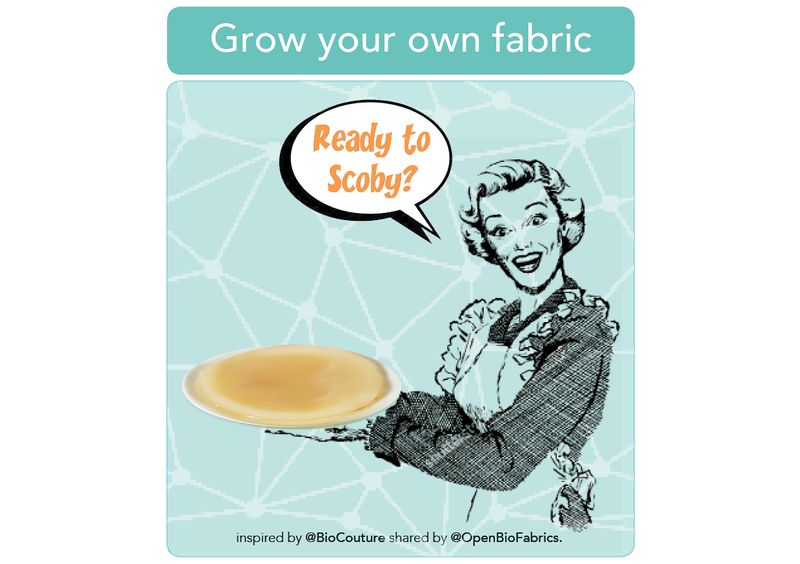
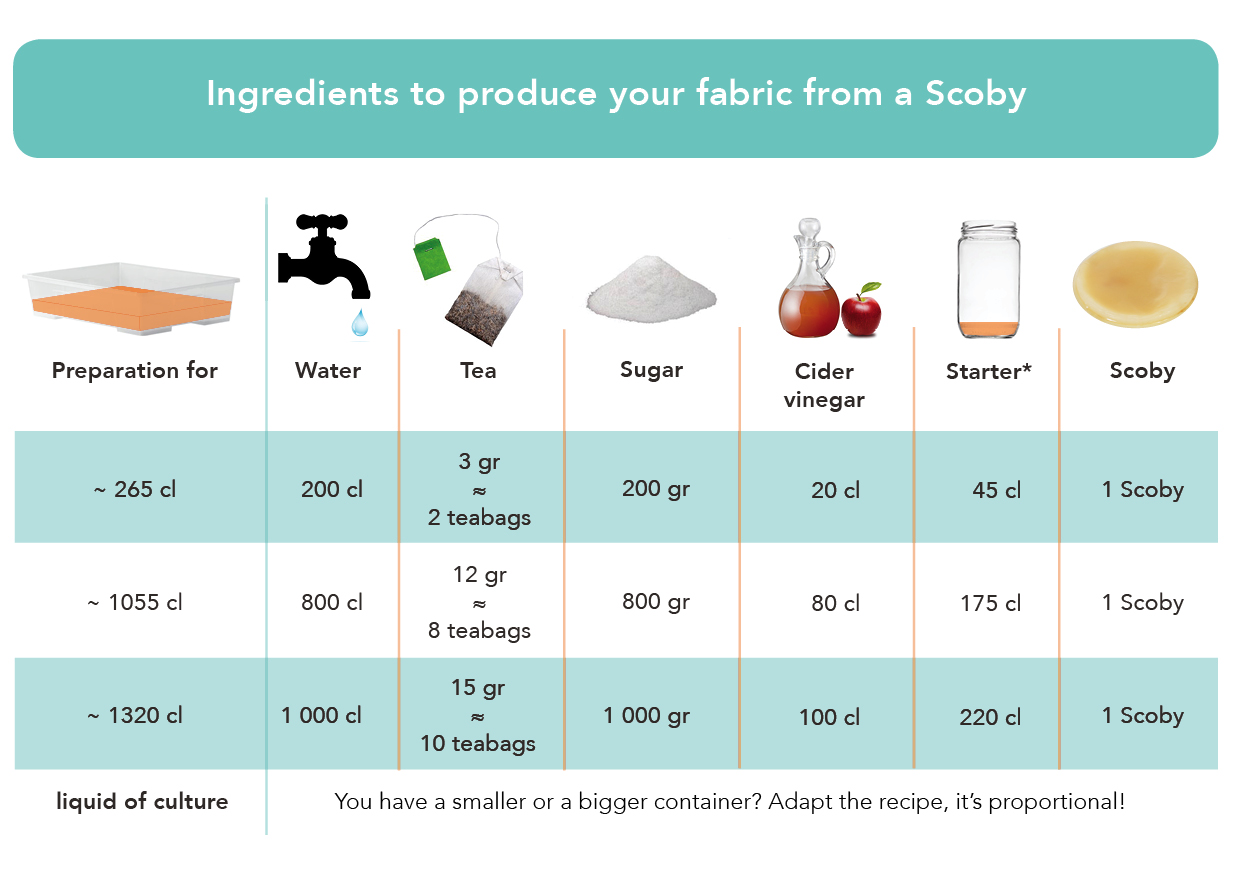
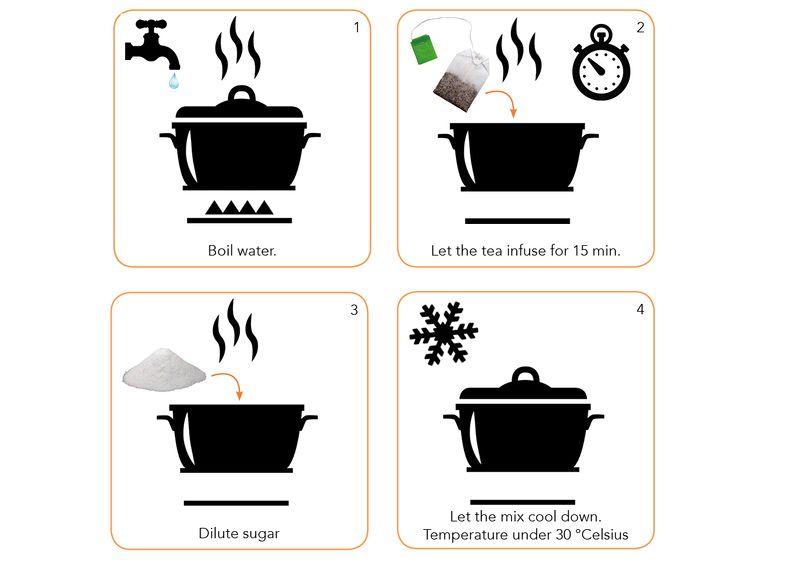
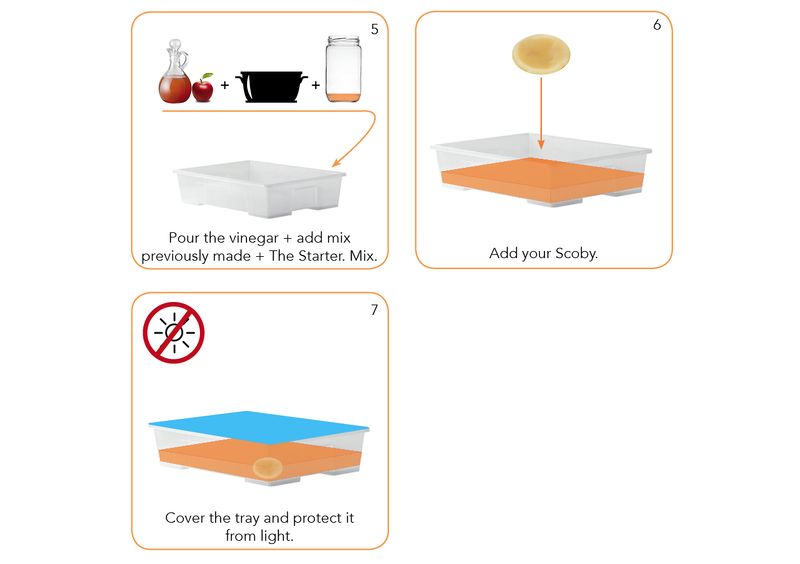
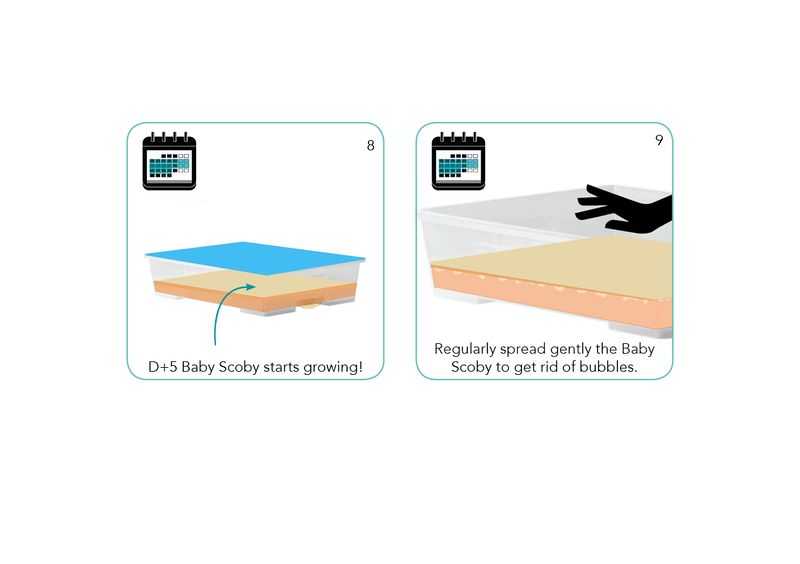
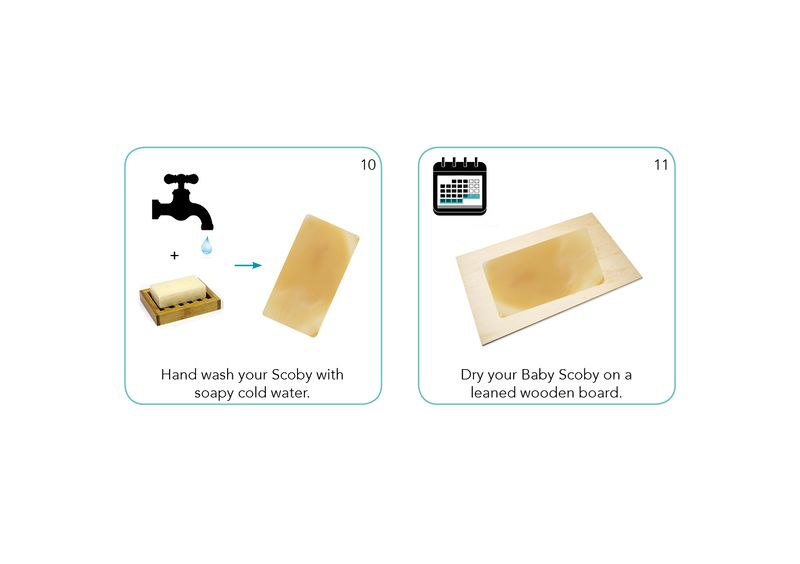
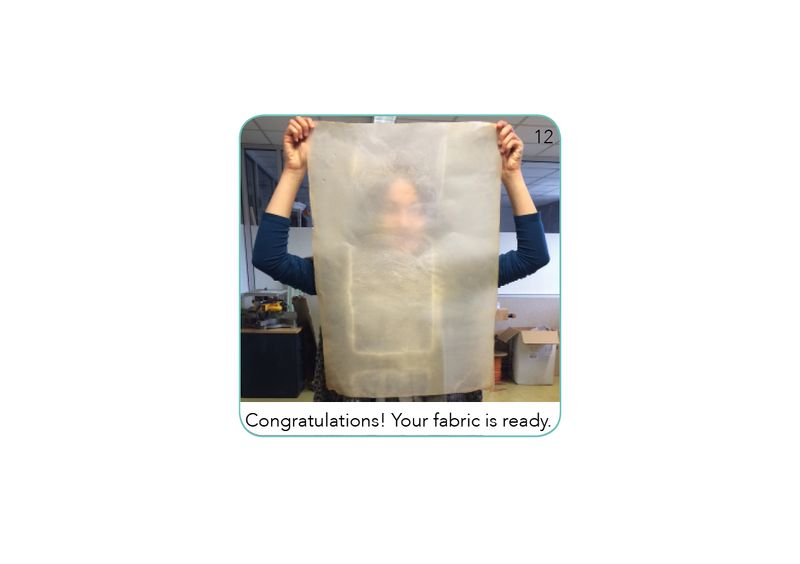
 Français
Français English
English Deutsch
Deutsch Español
Español Italiano
Italiano Português
Português